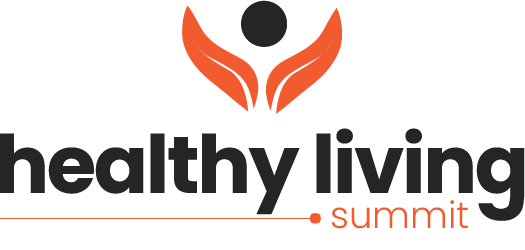The most common cause of COPD is smoking. COPD is primarily caused by smoking 85%-90%, but second-hand smoke, air pollutants, industrial dust, and fumes can also cause the disease. It is the third most common cause of death among Americans and affects over 15 million Americans.
COPD must be detected early to prevent severe complications and slow the progression of the disease. Doctors use the Gold Criteria system to determine each patient’s COPD severity. There are four stages of COPD – mild, moderate, and severe. Your doctor will determine the stage of COPD based on the results of a Spirometry test, which measures lung function. It does this by measuring how fast and easy you can exhale and how much air can be breathed in. The severity of symptoms and frequency of flare-ups will be considered.
As COPD is a progressive lung condition, the symptoms of COPD become worse over time. COPD patients are also more susceptible to complications like heart problems, hypertension, and lung cancer. While there is no cure, the condition can be treated. You can slow down the progression of the disease by working with your physician to develop a treatment plan and maintain a healthy lifestyle, such as avoiding smoking, exercising regularly, and eating a nutritious diet.
Stage 1: Mild COPD
The main COPD symptoms are a persistent cough and shortness of breath. This may also be accompanied by mucus. These symptoms may be so mild you might not even realize you have them.
Even though stage 1 COPD is easy to overlook, lung damage still occurs. Speak to your doctor if you are concerned that you might have COPD. If you smoke, quit smoking immediately to protect your lungs.
Your doctor may prescribe a long-acting bronchodilator in addition to quitting smoking. This medication relaxes the airway muscles and eases breathing. It is usually taken via an inhaler. Other side effects are dry mouth, dizziness, and tremors. Contact your healthcare provider if you experience severe side effects such as blurred vision, rapid or irregular heartbeat, or an allergic response with a rash and swelling.
It would help if you also got a yearly flu shot and a pneumonia vaccine to avoid respiratory complications and worsening symptoms.
Stage 2: Moderate COPD
In this stage, symptoms present in stage 1 become more severe as the airflow is restricted. In this stage, shortness of breath is more apparent during physical activity. Coughing and mucus may also increase. Other symptoms are wheezing and fatigue.
Often, this is the first time you become aware of your symptoms and seek help. If your doctor hasn’t prescribed a bronchodilator, they may recommend breathing exercises. You can maintain a healthy lifestyle using techniques like coordinated and pursed lip breathing.
Pulmonary rehab, in addition to your medication, is a common component of the treatment for stage 2 COPD. This program gives COPD patients the tools to manage their conditions better. It can reduce the severity of their symptoms and improve their quality of life. Physical therapists and dietitians will teach breathing techniques and provide nutritional and exercise advice. You can ask your doctor if pulmonary rehab is right for you.
Your doctor will schedule appointments based on your severity. You may need to see your doctor once every six months if you have mild symptoms. More severe symptoms require more frequent monitoring.
Stage 3: Severe COPD
Stage 3 lung function is significantly reduced. As the walls of air sacs continue to weaken in the lungs, it becomes harder to remove carbon dioxide and take in oxygen while exhaling.
The symptoms of the past are now more severe and noticeable. Shortness of breath, wheezing, or coughing more often, and thicker mucus may be produced.
Stage 4: Severe COPD
The lung function is deficient in stage 4. The symptoms of stage 3 worsen, and they become more persistent. It becomes difficult to breathe, and you feel short of breath. Hospitalizations due to breathing complications, lung infection, or respiratory failure are common in stage 4 COPD. Sudden flare-ups are also life-threatening.
The following symptoms may also be present in stage 4 COPD:
- Crackling sounds when you breathe in
- Barrel Chest
- Delirium
- A fast or irregular heartbeat
- Weight loss
- Pulmonary hypertension is high blood pressure affecting your arteries and the right side of your heart.
There are several treatment options available for severe COPD. These include supplemental oxygen, pulmonary rehab, and steroid administered orally, intravenously, or via an inhaler. Steroids can cause swelling of the mouth and airways, muscle weakness, fatigue, and weight loss. Learn more about how to manage medication side effects in our previous blog. If you have any questions, speak to your doctor.
Oxygen therapy or supplemental oxygen helps increase your oxygen intake and your tolerance to physical activity. Many devices can be used for oxygen therapy. The most commonly used is the nasal tube. This device has two lines inserted into your nostrils and an oxygen tank attached. It takes time to adjust to the supplemental oxygen, but you will feel more comfortable with practice. Anyone starting oxygen therapy can find resources from the American Lung Association.
Some people with severe COPD may also be candidates for lung surgery or transplants. Eligibility depends on several factors, including whether or not you have participated in a lung rehabilitation program and performed lung function tests. Additional considerations include your strength and if smoking is an issue. You cannot smoke to be eligible for lung surgery. You can ask your doctor if you are a candidate for lung surgery.


